- Benefits of Growing Petunia Seedlings
- Choosing the Right Timing
- Factors to Consider
- Best Time to Sow Seedlings
- Summary
- Understanding the Growing Season
- Factors Affecting the Growing Season
- Determining the Growing Season
- Extending the Growing Season
- Determining the Last Frost Date
- Methods for Determining the Last Frost Date
- Factors to Consider
- Preparing the Seedlings
- 1. Harden off the seedlings:
- 2. Transplant into larger containers:
- 3. Water the seedlings:
- 4. Fertilize the seedlings:
- 5. Protect the seedlings from pests:
- 6. Monitor the seedlings for diseases:
- Starting Seeds Indoors
- 1. Choose the Right Containers
- 2. Use Quality Seed Starting Mix
- 3. Provide Adequate Light
- 4. Maintain Proper Temperature and Humidity
- 5. Water Carefully
- 6. Harden Off Seedlings
- Providing the Optimal Growing Conditions
- 1. Temperature
- 2. Light
- 3. Soil
- 4. Watering
- 5. Fertilizer
- 6. Space
- 7. Pest and disease control
- 8. Support
- Planting the Seedlings
- Preparing the Planting Area
- Caring for Petunia Seedlings
- Watering
- Lighting
- Fertilizing
- Transplanting
- Pruning
- Pest and Disease Control
- Questions and Answers:
- Can I sow petunia seedlings directly into the ground?
- How long does it take for petunia seedlings to grow?
- Can I sow petunia seedlings in the winter?
- What kind of soil is best for petunia seedlings?
- How often should I water my petunia seedlings?
- Videos: HAVE YOU TRIED EATING THESE?! / ALLOTMENT GARDENING FOR BEGINNERS
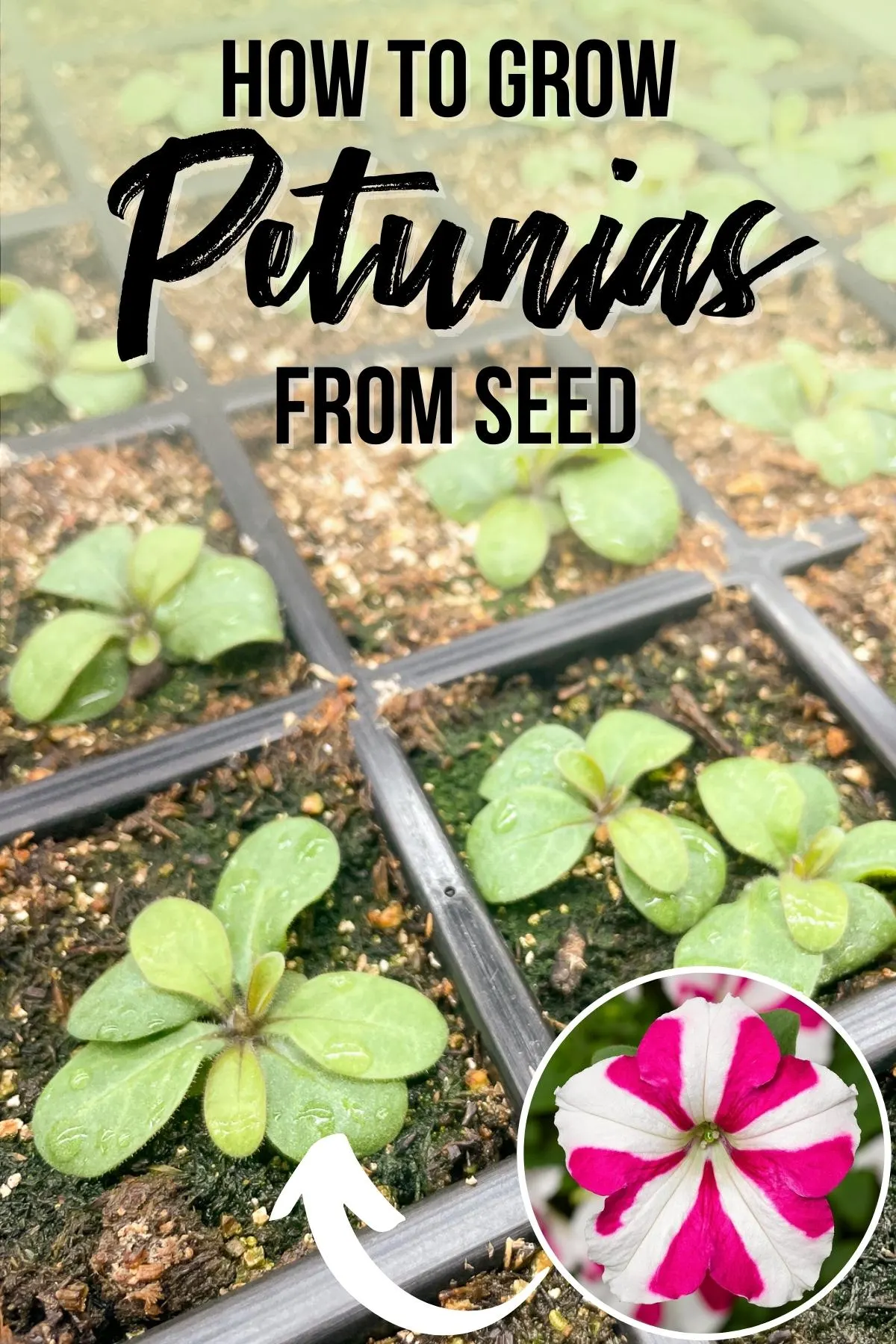
Are you ready to add vibrant color and beauty to your garden or containers? Petunias are a popular choice for their stunning blooms and versatility. Whether you’re a seasoned gardener or a beginner, growing petunia seedlings is a rewarding experience that can brighten up any space.
Timing is crucial when it comes to sowing petunia seedlings. To ensure the success of your plants, it’s important to understand the ideal conditions and timeline for sowing. In general, petunia seedlings take about 10-12 weeks to reach transplant size.
If you want your petunias to bloom and thrive at the right time, it’s crucial to plan ahead. The process starts by determining when the last frost date is in your area. Petunias are sensitive to frost and should only be planted after the risk of frost has passed. This means you’ll need to count back about 10-12 weeks from that date to determine when to sow your petunia seedlings.
Once you’ve determined the ideal sowing date, you can start preparing your seedlings. Petunia seeds should be sown in a well-draining medium, such as seed-starting mix, and kept moist until they germinate. Light is also important for germination, so make sure to place your seed tray in a bright location, but avoid direct sunlight.
Tip: To promote germination, you can cover your seed tray with a plastic dome or place it in a plastic bag to create a greenhouse effect.
After germination, you’ll need to provide your petunia seedlings with adequate light and consistent moisture. As they grow, you can start fertilizing them with a balanced fertilizer to encourage healthy growth. By following these steps and giving your petunia seedlings the care they need, you’ll be rewarded with beautiful, blooming plants in about 75 days.
Benefits of Growing Petunia Seedlings
- Early Start: Growing petunia seedlings allows you to get a head start on the growing season. By starting the seeds indoors, you can have healthy, established plants ready to go when the weather warms up.
- Improved Selection: When you grow petunia seedlings, you have access to a wider variety of flower colors, sizes, and patterns. This allows you to select the exact petunias that you want for your garden, rather than being limited to the choices available at local nurseries.
- Cost Savings: Growing petunia seedlings can be more cost-effective than purchasing established plants. The cost of a packet of petunia seeds is often much lower than the price of a single plant, allowing you to grow a larger number of petunias for the same budget.
- Customization: When you grow your own petunia seedlings, you have control over the care and conditions they receive. This means you can customize their growth and ensure they are grown in a way that meets your specific gardening goals.
- Learning Experience: Growing petunia seedlings can be a rewarding learning experience. It allows you to gain firsthand knowledge of the plant’s growth cycle and care requirements, helping you become a more knowledgeable and skilled gardener.
- Flexibility: By growing petunia seedlings, you have the flexibility to start them at any time that suits your gardening schedule. This allows you to plan ahead and have beautiful petunias blooming exactly when you want them.
Choosing the Right Timing
Choosing the right timing for sowing petunia seedlings is crucial for their successful growth and development. To ensure that your petunia plants thrive, it is important to consider factors such as the local climate, frost dates, and the specific needs of the petunia variety you are planting.
Factors to Consider
- Local Climate: Petunias thrive in warm weather, so it is important to consider your local climate before sowing the seedlings. Wait until the threat of frost has passed and the soil has warmed up to around 60°F (15°C).
- Frost Dates: Check the average last frost dates for your area to ensure that you plant your petunias at the appropriate time. Petunias are sensitive to frost and should not be exposed to temperatures below 40°F (4°C).
- Petunia Variety: Different petunia varieties have varying growth habits and temperature requirements. Some varieties are more cold-tolerant, while others are more heat-tolerant. Research the specific needs of your chosen variety to determine the best timing for planting.
Best Time to Sow Seedlings
The optimal time to sow petunia seedlings is typically about 75 days before you plan to transplant them into your garden. This allows the seedlings enough time to grow and develop before being planted outdoors.
For areas with a short growing season, starting petunia seedlings indoors 8-10 weeks before the last frost date is recommended. This gives the seedlings ample time to establish and grow strong roots before being moved outdoors.
Alternatively, if you live in a warmer climate with a longer growing season, you can sow petunia seedlings directly into the garden once the soil temperature has reached the optimal range mentioned earlier.
Summary
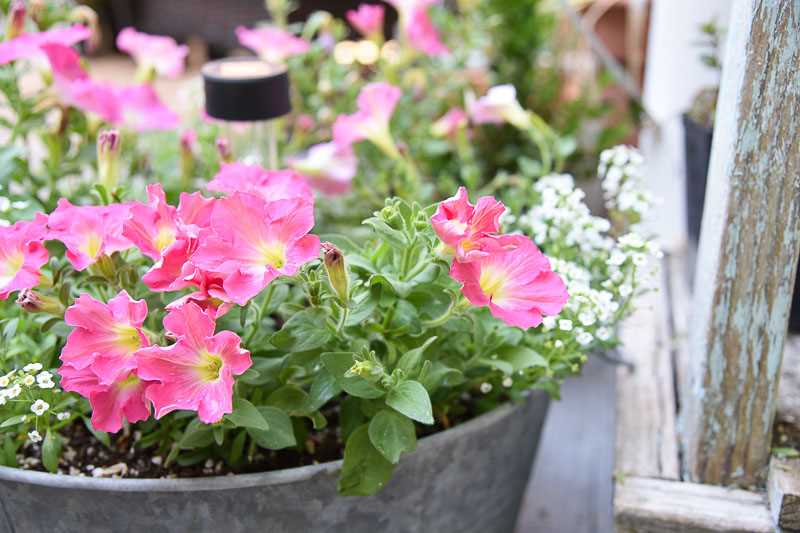
Choosing the right timing for sowing petunia seedlings is essential for their successful growth. Consider factors such as the local climate, frost dates, and the specific needs of the petunia variety you are planting. Whether starting seedlings indoors or sowing directly in the garden, ensuring the optimal timing will help your petunias thrive and produce beautiful blooms.
Understanding the Growing Season
The growing season refers to the period of time in which plants can grow and thrive. It is influenced by various factors such as temperature, daylight hours, and soil conditions. Understanding the growing season is important for successful gardening, as it determines when to sow seeds and transplant seedlings.
Factors Affecting the Growing Season
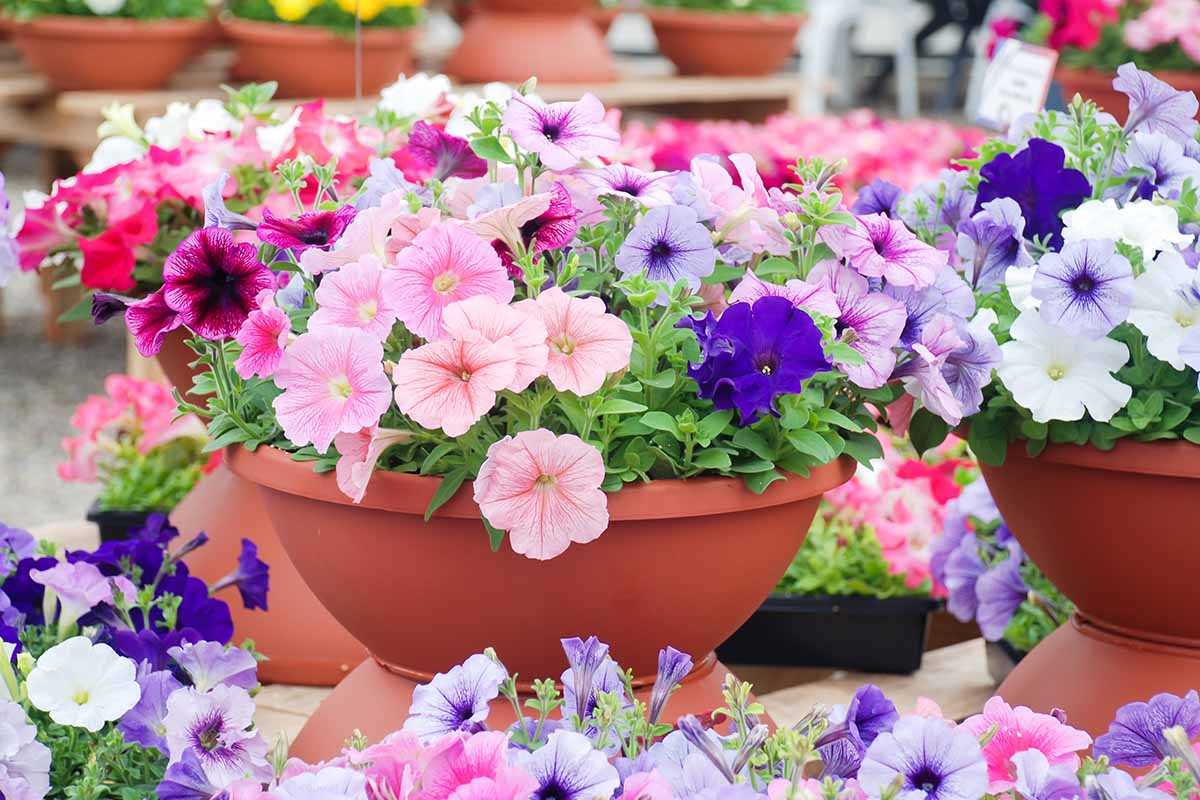
- Temperature: Different plants have different temperature requirements for growth. Some plants, like petunias, thrive in warmer temperatures, while others prefer cooler climates. The average daily temperature is a crucial factor in determining the start and end of the growing season.
- Daylight Hours: Day length also plays a significant role in the growing season. Plants rely on sunlight for photosynthesis, the process by which they convert light energy into food. Longer daylight hours stimulate plant growth and flowering.
- Soil Conditions: The condition of the soil, including its moisture content and nutrient levels, can impact the growing season. Plants need adequate soil moisture and nutrients to grow and develop properly.
Determining the Growing Season
The growing season can vary depending on the region and climate. In general, the growing season begins in the spring when temperatures start to rise and the risk of frost has passed. It typically ends in the fall when temperatures drop and frost becomes a risk again.
For specific plants like petunias, it is important to know the optimal growing season. Petunias are warm-season annuals that prefer temperatures between 50 and 70 degrees Fahrenheit. They can be easily damaged by frost, so it is best to sow petunia seeds or transplant seedlings after the danger of frost has passed.
Extending the Growing Season
Gardeners can extend the growing season by using various techniques, including:
- Starting seeds indoors: By starting seeds indoors before the outdoor growing season begins, gardeners can get a head start on the growing season and enjoy earlier blooms.
- Using row covers: Row covers help to protect plants from frost and extend the growing season by creating a microclimate that traps heat and raises the temperature around the plants.
- Installing greenhouses or cold frames: Greenhouses and cold frames provide controlled environments for plants, allowing them to grow outside of the normal growing season.
By understanding the growing season and utilizing techniques to extend it, gardeners can maximize their harvests and enjoy a longer period of time to grow their favorite plants, like petunias.
Determining the Last Frost Date
Determining the last frost date in your area is essential for successful petunia seedling planting. The last frost date refers to the date when the risk of frost in your region is minimal. Planting petunia seedlings before the last frost date can result in damage or even death of the plants due to the cold temperatures.
Methods for Determining the Last Frost Date
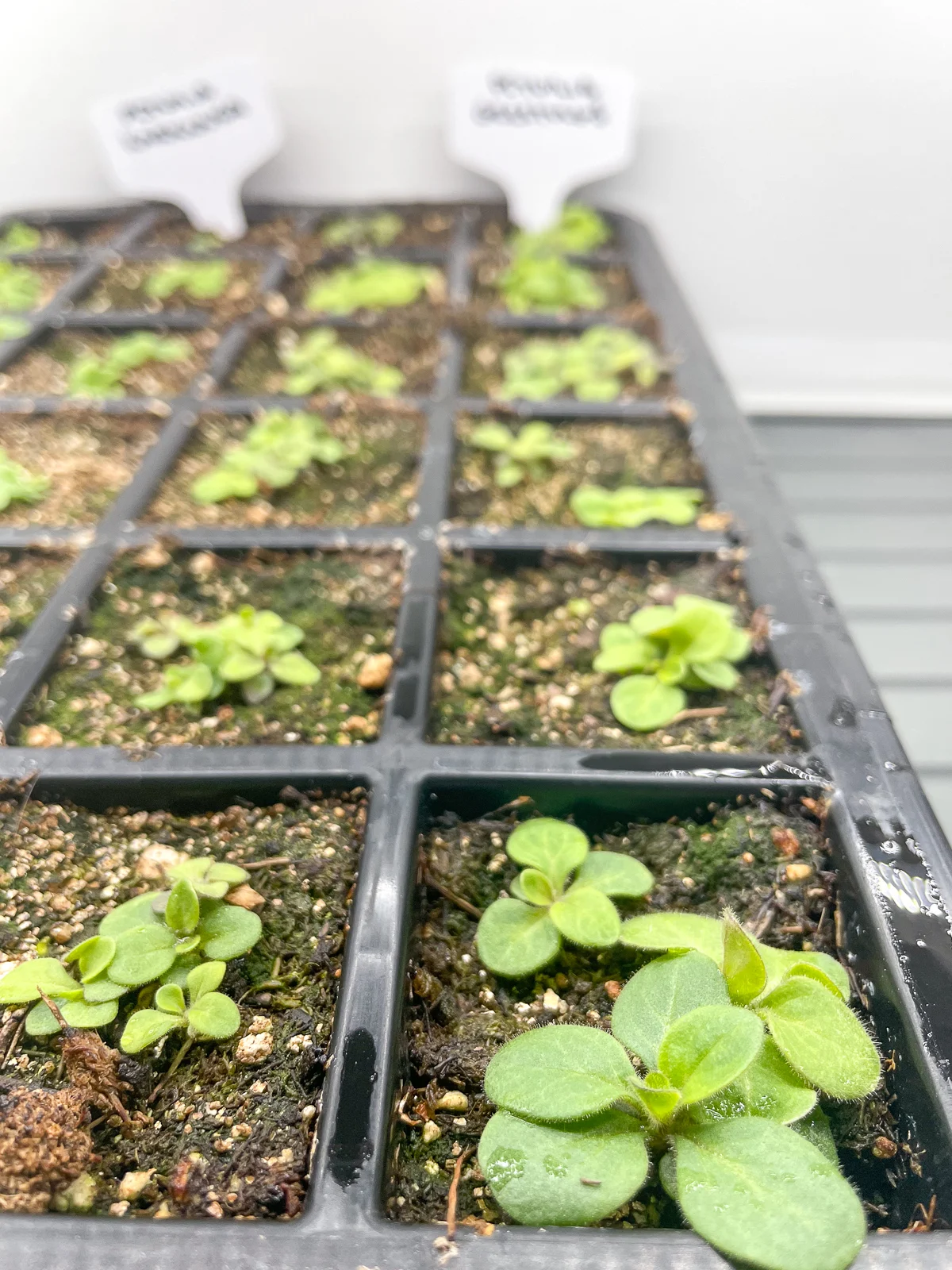
There are several methods you can use to determine the last frost date in your area:
- Local Climate Data: You can consult local climate data, such as historical weather records, to get an estimate of the average last frost date in your region. This information can usually be obtained from weather stations, agricultural extension offices, or online databases.
- Gardening Almanacs: Gardening almanacs often provide last frost date information for different regions. These publications usually include a calendar or a chart that lists the estimated last frost date for each area.
- Online Resources: There are numerous online resources that offer tools and calculators to help you determine the last frost date in your specific location. These tools typically ask for your zip code or city and provide an estimate based on historical weather patterns.
Factors to Consider
When determining your last frost date, it’s important to consider other factors that can affect the timing of spring frost in your area:
- Microclimates: Different areas within a region can have microclimates that influence the timing of the last frost. For example, low-lying areas or areas near bodies of water may experience a later last frost date than higher elevations.
- Global Warming: Climate change can affect the timing of frost dates. It’s a good idea to consult the most recent data available and consider any long-term trends in your region.
- Weather Patterns: Unusual weather patterns, such as late cold snaps or early warm spells, can also influence the last frost date. Keep an eye on local weather forecasts for any potential changes that may affect your planting schedule.
By considering these factors and using the available resources, you can determine the last frost date with a reasonable level of accuracy. Once you have this information, you can plan your petunia seedling planting accordingly to ensure their health and success.
Preparing the Seedlings
Before planting your petunia seedlings, there are a few steps you can take to ensure they are ready for the outdoors. These preparations will help your seedlings establish strong roots and adapt to their new environment.
1. Harden off the seedlings:
Petunia seedlings need to be gradually exposed to outdoor conditions in a process called hardening off. Start by moving the seedlings to a sheltered outdoor location for a few hours each day, gradually increasing their time outside over a period of 7 to 10 days. This will help them acclimate to sunlight, wind, and temperature changes.
2. Transplant into larger containers:
If your petunia seedlings have outgrown their original containers, it’s time to transplant them into larger pots. This will give their roots more room to grow and prevent them from becoming root-bound. Choose pots that have good drainage holes and fill them with a well-draining potting mix.
3. Water the seedlings:
Consistent watering is crucial for the healthy development of petunia seedlings. Make sure the soil is moist but not waterlogged. Water the seedlings from below by placing the pots in a tray filled with water and allowing them to soak up the moisture. Avoid overhead watering, as this can lead to diseases.
4. Fertilize the seedlings:
Feed your petunia seedlings with a balanced liquid fertilizer to promote healthy growth. Follow the instructions on the fertilizer packaging for mixing ratios and application frequency. Be careful not to over-fertilize, as this can damage the delicate seedlings.
5. Protect the seedlings from pests:
Keep an eye out for pests such as aphids, slugs, and snails, which can damage or kill your petunia seedlings. Use organic pest control methods or insecticidal soap to keep these pests at bay. Regularly inspect the seedlings for any signs of infestation and take appropriate action if necessary.
6. Monitor the seedlings for diseases:
Petunia seedlings are susceptible to fungal diseases such as damping off. Avoid overwatering and ensure good air circulation around the plants to prevent the development of these diseases. If you notice any signs of disease, remove and discard the affected seedlings to prevent the spread.
By following these preparatory steps, you can ensure that your petunia seedlings are healthy, strong, and ready for planting in the garden. Taking the time to properly prepare your seedlings will increase their chances of thriving and producing beautiful blooms.
Starting Seeds Indoors
Starting seeds indoors is a great way to get a head start on your gardening season. It allows you to grow a wider variety of plants and gives you control over the growing conditions. Here are some tips to help you successfully start seeds indoors:
1. Choose the Right Containers
When starting seeds indoors, it’s important to use containers that provide good drainage. Plastic or biodegradable pots are commonly used for starting seeds. Make sure to clean and sterilize the containers before use to prevent diseases from spreading.
2. Use Quality Seed Starting Mix
A quality seed starting mix is essential for the healthy growth of your seedlings. It should be lightweight, sterile, and well-draining. Avoid using regular garden soil, as it may contain pests and diseases that can harm your young plants.
3. Provide Adequate Light
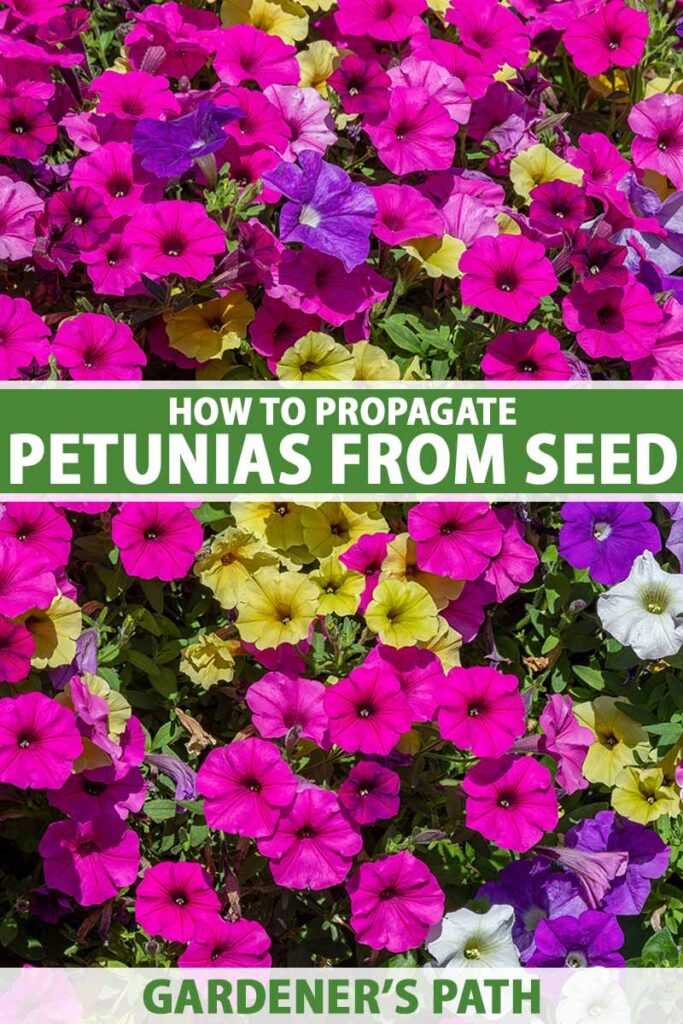
Seedlings need ample light to grow strong and healthy. If you don’t have access to natural light, consider using fluorescent or LED grow lights. Place the lights 2-3 inches above the seedlings and adjust their height as the plants grow.
4. Maintain Proper Temperature and Humidity
Most seeds require warm temperatures to germinate. Keep the temperature between 65-75°F (18-24°C) during the day and slightly cooler at night. To maintain humidity, cover the containers with a plastic dome or use a plastic bag until the seeds sprout.
5. Water Carefully
Overwatering can cause seedlings to rot, while underwatering can lead to stunted growth. Water the seedlings from the bottom by placing the containers in a tray filled with water. Allow the soil to soak up the water and then empty the excess.
6. Harden Off Seedlings
Before transplanting your seedlings outdoors, they need to be hardened off. This process involves gradually exposing them to outdoor conditions, such as sun, wind, and temperature fluctuations. Start with a few hours outside and gradually increase the time over the course of a week.
By following these tips, you can successfully start your seeds indoors and have strong, healthy seedlings ready for planting in your garden.
Providing the Optimal Growing Conditions
Creating the right growing conditions is essential for the successful growth of petunia seedlings. Here are some key factors to consider:
1. Temperature
Petunias thrive in temperatures between 70-75°F (21-24°C) during the day and 55-65°F (13-18°C) at night. It’s important to maintain a consistent temperature to promote healthy growth.
2. Light
Petunias require full sun to grow well, so choose a location that receives at least 6 hours of direct sunlight per day. If growing indoors, use fluorescent grow lights to provide the necessary light intensity.
3. Soil
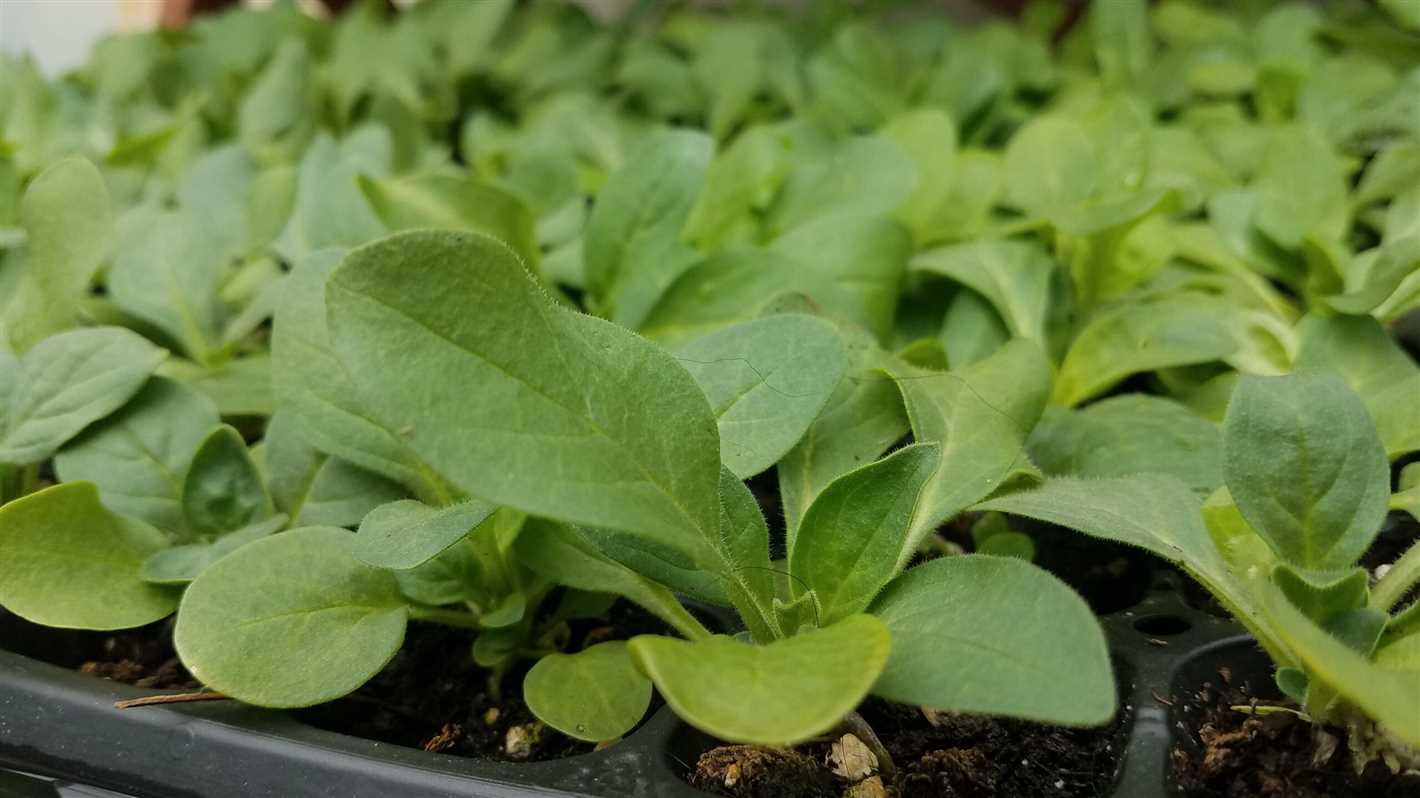
Well-draining soil is crucial for petunia seedlings. Prepare the soil by adding organic matter, such as compost or aged manure, to improve drainage and fertility. Aim for a pH level between 6.0 and 7.0.
4. Watering
Water petunia seedlings regularly, keeping the soil evenly moist but not waterlogged. Check the moisture level by sticking your finger into the soil up to the second knuckle – if it feels dry, it’s time to water.
5. Fertilizer
Feed your petunia seedlings with a balanced water-soluble fertilizer every two weeks. Choose a formula with equal amounts of nitrogen, phosphorus, and potassium to promote healthy growth and abundant blooms.
6. Space
Provide adequate space for each petunia seedling to allow proper air circulation and prevent overcrowding. This will help prevent the development of diseases and ensure optimal growth.
7. Pest and disease control
Regularly inspect your petunia seedlings for any signs of pests or diseases. Common pests include aphids, slugs, and snails, while common diseases include powdery mildew and gray mold. Use organic pest control methods or consult a local gardening expert for appropriate treatments.
8. Support
If growing trailing or vining petunias, provide support such as trellises, stakes, or cages to prevent the plants from sprawling on the ground. This will help maintain a neat and attractive appearance.
By providing the optimal growing conditions, you can ensure that your petunia seedlings grow healthy and strong, ready for planting in 75 days.
Planting the Seedlings
Once your petunia seedlings are ready for planting, you’ll need to prepare the soil and choose the right location for them to thrive. Follow these steps to ensure successful planting:
- Choose a sunny location: Petunias love sunlight and need at least 6-8 hours of direct sunlight each day. Select a spot in your garden that receives ample sunlight.
- Prepare the soil: Petunias prefer well-drained soil with a pH level between 6.0 and 7.5. Before planting, work the soil with compost or organic matter to improve its fertility and drainage.
- Space the seedlings: Dig holes in the prepared soil, spacing them according to the specific variety’s instructions. Generally, petunias should be spaced 6-12 inches apart.
- Plant the seedlings: Carefully remove each seedling from its container and gently loosen the roots. Place the seedling into the hole, making sure the soil level is the same as the container’s soil level. Firmly press the soil around the seedling to secure it in place.
- Water thoroughly: After planting, water the seedlings thoroughly to ensure good root establishment. Water deeply, allowing the water to reach the roots. Avoid overhead watering, as it may cause the seedlings to rot.
- Maintain proper care: Once planted, petunia seedlings need regular watering, especially during hot and dry periods. Fertilize them every 2-3 weeks with a balanced liquid fertilizer to promote healthy growth and abundant blooms.
- Protect from frost: If there is a risk of frost, make sure to cover the seedlings with a frost cloth or bring them indoors to protect them. Petunias are susceptible to frost damage, so it’s crucial to protect them in colder temperatures.
By following these planting guidelines, you can ensure that your petunia seedlings have the best chance of thriving and producing beautiful flowers in just 75 days.
Preparing the Planting Area
Before sowing petunia seedlings, it is important to prepare a suitable planting area. Here are the steps to prepare the planting area:
- Choose a sunny location: Petunias thrive in full sunlight, so select a spot that receives at least 6 hours of direct sunlight every day.
- Clear the area: Remove any existing plants or weeds from the planting area. Use a garden fork or shovel to loosen the soil and remove any rocks or debris.
- Improve the soil: Petunias prefer well-draining soil that is rich in organic matter. If the soil in your planting area is heavy clay or sandy, amend it by mixing in compost or aged manure.
- Test the soil pH: Petunias prefer a slightly acidic soil with a pH range of 5.5 to 7.0. Use a soil testing kit to check the pH of your soil and make any necessary adjustments.
- Level the planting area: Use a rake to level the soil and create a smooth surface for planting.
- Provide proper drainage: If the planting area has poor drainage, consider adding a layer of gravel or sand at the bottom to improve it.
Once the planting area is prepared, you are ready to sow the petunia seedlings and start the growing process. Make sure to water the seedlings regularly and provide them with proper care to ensure healthy growth and vibrant blooms.
Caring for Petunia Seedlings
Once your petunia seedlings have germinated and are ready to be transplanted, it’s important to provide them with proper care to ensure their healthy growth and development.
Watering
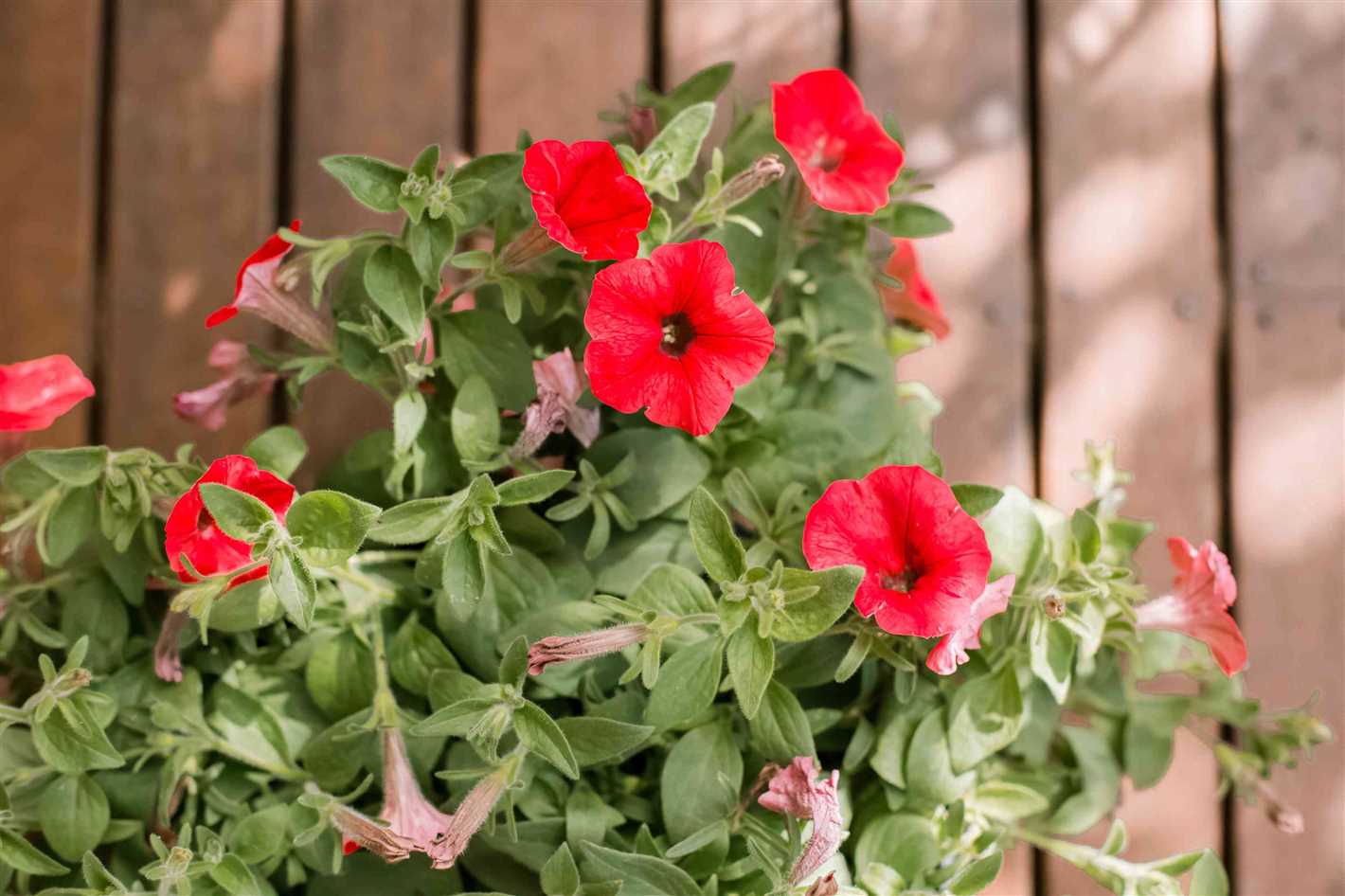
Water your petunia seedlings regularly to keep the soil evenly moist, but not soggy. Let the top layer of soil dry out slightly between waterings, as overwatering can lead to root rot.
Lighting
Place your petunia seedlings in a location where they can receive at least 6-8 hours of direct sunlight per day. If you’re growing them indoors, you may need to supplement with artificial grow lights to provide adequate light.
Fertilizing
When your petunia seedlings have developed their first true leaves, you can start fertilizing them with a balanced liquid fertilizer. Follow the package instructions for the recommended dosage and frequency of application.
Transplanting
When your petunia seedlings have grown to a height of around 3-4 inches and have developed a strong root system, they are ready to be transplanted into larger containers or into your garden beds. Be sure to harden them off gradually by exposing them to outdoor conditions for increasing periods of time before planting them directly into the ground.
Pruning
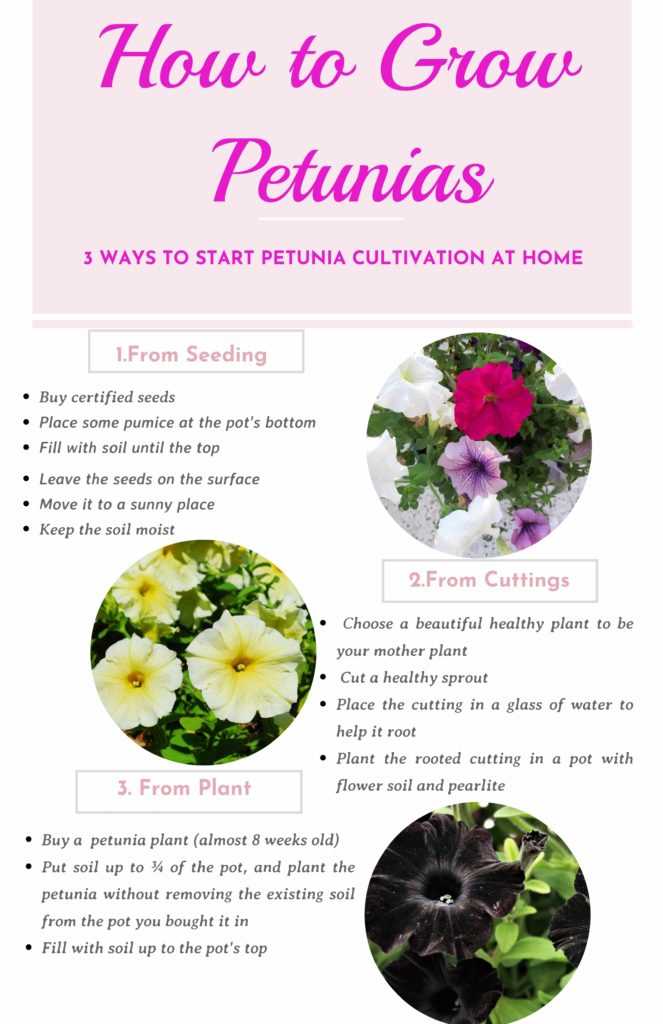
To promote bushier growth and more abundant blooms, you can pinch back the tips of your petunia seedlings once they have grown a few inches tall. This will encourage branching and result in a fuller, more compact plant.
Pest and Disease Control
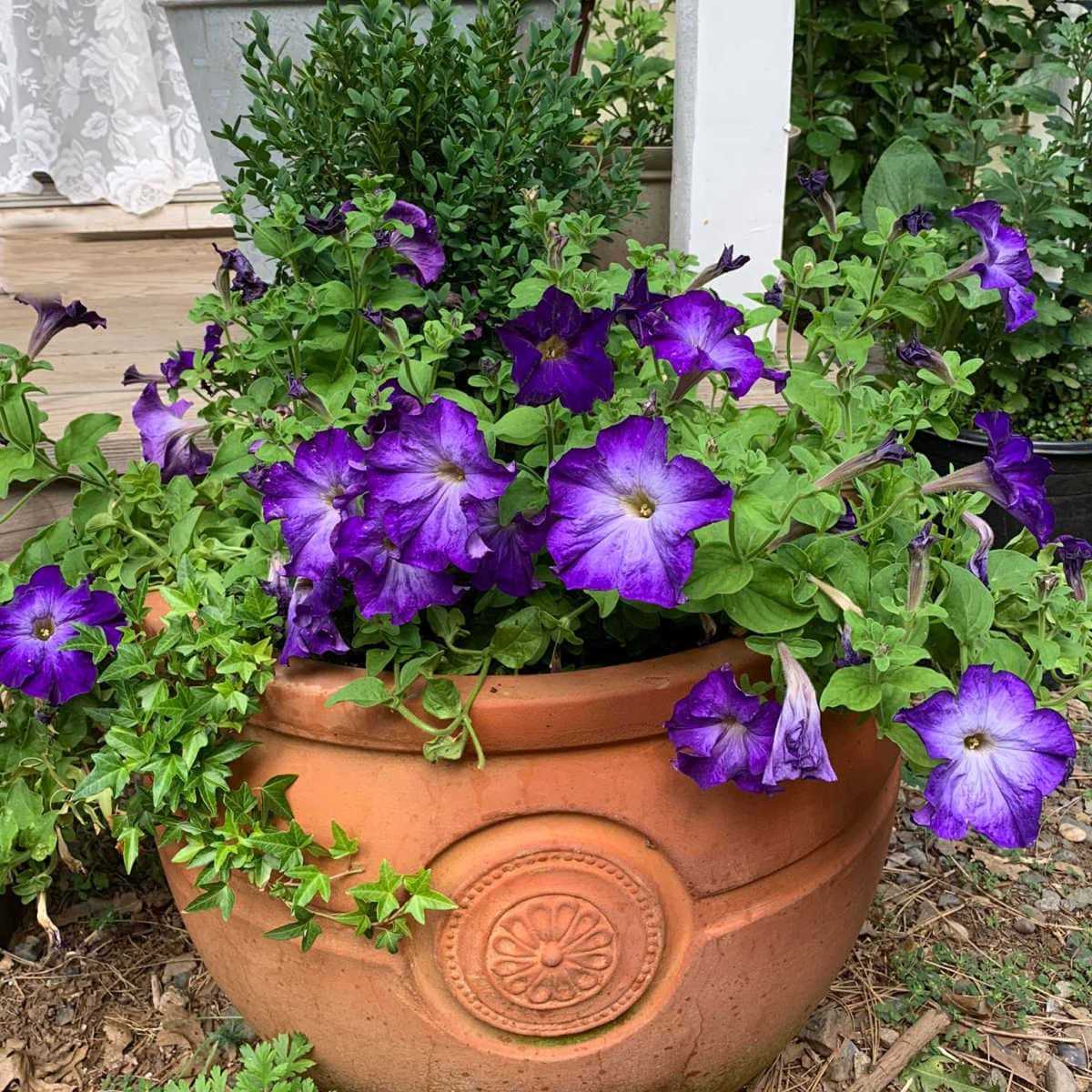
Keep an eye out for common pests such as aphids, snails, and slugs, as well as signs of fungal diseases like powdery mildew. If you notice any issues, promptly treat them with appropriate insecticides or fungicides to protect your petunias.
By providing your petunia seedlings with the proper care and attention, you can ensure that they grow into healthy, vibrant plants that will reward you with a beautiful display of colorful blooms.
Questions and Answers:
Can I sow petunia seedlings directly into the ground?
No, it is recommended to start petunia seedlings indoors and then transplant them outside after they have developed.
How long does it take for petunia seedlings to grow?
Petunia seedlings usually take about 6-8 weeks to grow before they are ready to be transplanted outside.
Can I sow petunia seedlings in the winter?
No, petunias are warm-weather plants and require a lot of sunlight. It is best to sow petunia seedlings in the spring or early summer.
What kind of soil is best for petunia seedlings?
Petunia seedlings do best in well-draining soil that is rich in organic matter. They prefer a slightly acidic pH level of around 6.0-6.5.
How often should I water my petunia seedlings?
Petunia seedlings should be watered regularly, keeping the soil evenly moist but not waterlogged. It is best to water them in the morning so that any excess moisture can dry off during the day.







